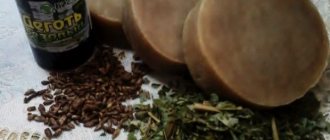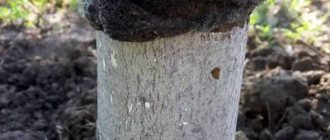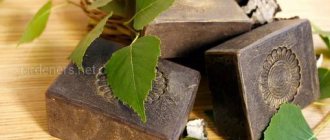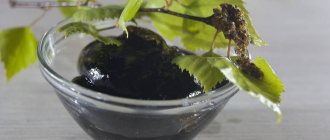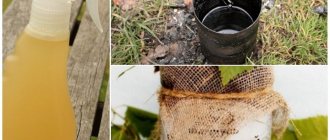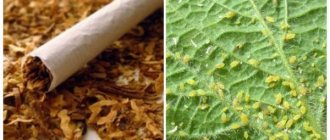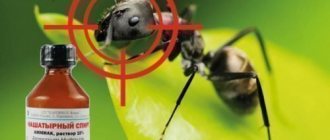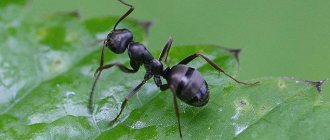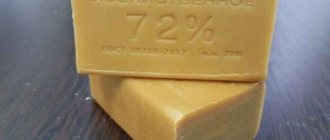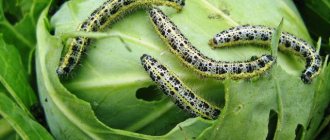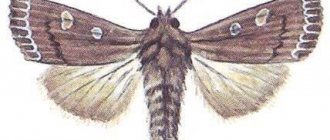With the arrival of the first spring days, revival begins on the land plots. Lovers of gardening will not only have to plant seedlings, but also not allow insect pests to destroy them. Especially great difficulties can arise in the fight against ants in summer cottages. After all, garden pests not only feed on plant sap and build nests in their roots, but are also carriers of aphids - the most dangerous enemy of green spaces. But getting rid of pests is very difficult, since only working individuals come to the surface of the anthill. The main reproducer of the genus, the queen, practically never leaves the nest. Birch tar from ants in the garden is one of the natural organic remedies that will help cope with this problem.
Birch tar - use in the garden
Birch tar is made from birch bark by heating in special hermetically sealed containers. The output is an oily viscous mass of dark brown, almost black color, with a sharp characteristic odor. This is just what you need to repel pests in your garden and garden. It is used on almost all crops that need protection from insects. These are onions, carrots, all cruciferous and nightshade crops. It can be used to water young seedlings of annual flowers planted in open ground, as well as shrubs and fruit trees.
When using a plant protection solution, it is necessary to take into account some points.
- Tar does not dissolve well in water. Therefore, first add a soap solution, and only then add resin. Only after this they begin to process the plants.
- After using the solution, the remaining product is difficult to wash off from the watering can, so a separate container is used for processing.
- When spraying, it is better not to use expensive sprinklers; small oil drops will fill the nozzle holes, and the device may fail.
- To prevent your hands from smelling unpleasantly after treatment, wear rubber gloves with high cuffs when performing treatment.
- Do not treat plants immediately after rain or watering of plants, or if rain is forecast in the near future. Otherwise, the processing will be useless, and you will waste your time and energy.
- The treatment is carried out in dry and windless weather, preferably in the evening when the sun has set. You cannot carry out the treatment during the day in the brightly scorching sun, and do not exceed the dosage of the drug, otherwise the leaves will turn black after treatment.
Disadvantages of birch tar
- A sharp unpleasant smell will cause discontent among neighbors or passers-by;
- The drug acts on both harmful insects and pollinating insects, including bees, which can affect the yield of bee-pollinated crops;
- The above-ground part of the plants cannot be processed; they cannot then be eaten because of the unpleasant odor;
- Not recommended for indoor plants;
- It stains clothes, which are then very difficult to wash;
- The concentration of the solution must not be exceeded during processing. Concentrated tar is toxic; working solutions with it must be prepared with precautions for substances of the 3rd hazard class.
Tar soap can also be used in pest control, but it is not as fragrant as the resin itself. And if you use it, you need to take much more of it, which is not entirely economical.
Toxicity to humans and plants
It is impossible to say that tar is absolutely harmless - it contains:
- benzene;
- guaiacol;
- cresol;
- xylene;
- toluene;
- phenol.
All of them are toxic and have a negative effect on humans. Of course, the highest concentration of harmful substances is in sapropel tar. The drug made from birch bark and wood contains much less of them. The purest, birch bark tar, is expensive, is usually used in the medical and perfume industries, and is rarely used in the garden. It is the least effective against pests and has a weak odor.
After dilution, toxicity is reduced to class 4 (low hazard). The respirator can be replaced with a gauze bandage, and people who are not particularly sensitive take off their gloves - the solution that gets on the skin promotes wound healing. It makes no sense to greatly dilute tar to reduce toxicity - reducing the concentration of the substance makes the odor weak. Processing plants becomes useless.
How to dilute birch tar in water for spraying
For watering or spraying plants, the solution is prepared in the same way to protect against all types of pests.
First, dissolve 2 tbsp in 1 liter of warm water. l. liquid soap or planed laundry soap (powder), mix everything thoroughly.
Only then add 1 tbsp. l. birch tar, and mix everything well again.
The result is a mother solution, which is added to 9 liters of water. After this you will get a working solution. The plants are watered or sprayed with the prepared working solution.
Compared to chemicals, birch resin has many advantages.
- Effective against many insects and pests - onion and carrot flies, cabbage butterflies, strawberry weevils, Colorado potato beetles, etc. The drug is also effective against moles, shrews and mole crickets, and perfectly repels rodents.
- The solution is prepared quite simply, it can be sprayed on plants or watered at the root; the drug also does not have a negative effect on the soil;
- The effect of the product after treatment lasts up to 3-4 weeks, and sometimes one treatment is enough for the entire season;
- The drug is safe for humans and plants. After processing, root vegetables do not smell at all like tar, and their taste does not change. However, it should be noted that berries and the above-ground parts of plants (onions, cabbage) can retain the smell for quite a long time, so avoid getting the solution on the above-ground parts of the plants.
Principle of operation
The principle of action of birch tar is based on an unpleasant odor that repels pests with a keen sense of smell. The most effective remedy against those pests that live in the ground are mole crickets, moles, gypsy moths and voles.
Conventionally, the duration of action of tar can be divided into three categories:
- Strong. Duration exceeds 1 month; as a rule, a single treatment is sufficient to remove pests from the area.
- Average. Lasts 3 to 4 weeks and may require repeated treatments for plants with long growing seasons.
- Weak. It lasts from 2 to 3 weeks, and in unfavorable weather conditions it weakens or stops altogether.
Therefore, before using the product, it is worth finding out which pests are spoiling the crop and how susceptible they are to tar.
Birch tar - how to use it against pests
The smell of tar lingers in the ground for 20-23 days; on the surface, the smell evaporates faster, so the aboveground part of the plants is re-treated.
Onion, carrot, cabbage fly . Treatment is carried out once every 10 days with moderate precipitation. If there has been heavy rainfall, treatment is carried out more often.
Wireworm and mole cricket . The working solution is applied and infused for 1 hour. Then the potato tubers are soaked in the solution before planting. Or the grooves (holes) are sprayed with the solution before planting the tubers.
Colorado beetle. When the tops grow on the potatoes, the treatment is carried out by spraying the solution. Potatoes with moderate rainfall are sprayed 3-4 times per season. If it rains heavily, of course, treatments need to be carried out more often.
Strawberry weevil. Birch tar is an excellent remedy for repelling weevils on strawberries. The first treatment is carried out immediately after the snow melts and the bushes are treated after winter. The second, when the strawberries threw out their flower stalks and they had not yet opened. And the third is carried out when the buds on the peduncles begin to open.
Spider mite . Spider mites, which are especially active in hot, dry weather, cannot resist the strong aroma of birch resin. The pest is tiny in size, but causes enormous damage to garden and vegetable crops.
the sawfly can damage a wide variety of plants: currants, gooseberries, apple trees, plums, pears, etc. But all varieties of this dangerous insect quickly retreat away from plantings that smell of tar.
Aphid . All gardeners know firsthand how quickly insects turn young shoots into ugly squiggles in any weather. However, the malicious insect has a weak point - it cannot stand the smell of birch resin.
Using sawdust
You can place sawdust in the spaces between the rows, which are soaked in a resin solution. To do this, dilute 3 tbsp per 10 liters of water. l. powdered laundry or liquid soap, stir, add 2 tbsp. l. tar, stir the solution well again, and then soak in the sawdust and place them between onions, carrots, and cabbage. True, this method has disadvantages.
After watering and rain, the efficiency will decrease, and also when loosening the soil, sawdust is embedded in the soil, and then it is necessary to add it again.
Using rags soaked in tar solution
Unnecessary old rags (rags) are soaked in a tar solution and wrapped around a peg, which is stuck into the soil between plantings. The smell repels flies and cabbage butterflies; they do not land on the plants, which means they do not lay larvae.
You can also lay out rags soaked in the working solution on the beds. To do this, take an unnecessary rag, soak it in the solution, or simply drip the product into it in several places. Then place this rag between the rows. When watering or loosening the soil, the rag is removed, and after finishing the work it is placed again in the same place. You can add another drop of the product to enhance the smell.
Manufacturing process
First of all, you need to prepare the containers. You will need two dishes:
- Small for collecting finished tar;
- More for birch bark. The container should have a tight-fitting lid and a small hole in the bottom through which the tar will flow out.
The larger container must be connected to the smaller one so that there are no gaps or holes between them. Air should not pass inside the large container.
Source blogspot.com
Next you need to make a fire. When figuring out how to get birch tar at home, don’t forget about safety. You need to make a fire in an open area away from fire-hazardous buildings. They dig a hole in the ground, place a small dish inside, a large one above it, and cover them with firewood. Shredded birch bark is placed inside the latter and closed with a lid. To prevent air from getting inside, the lid is pressed down with a brick or the joint is covered with clay. The lid can also be covered with firewood so that the heat comes from everywhere.
Now all that remains is to light the fire and wait. The process will begin when the temperature inside rises to +650 degrees. Tar will begin to separate and flow into the pan below. When finished, you need to let it cool, then pour it into a storage container and you can use it. A dark glass bottle with a tight-fitting cap is suitable for storage.
It will take several hours to obtain birch tar: at a temperature of +600-650 degrees it will take 1.5-2 hours. Burnt birch bark can be used as birch coals.
You can see clearly how the tar production process occurs in the video
Protecting fruit trees from ants and rodents
Ants also cannot stand the smell of tar, and this is widely used in the fight against it. So, on fruit trees, gardeners make bandages (catching belts) from rags soaked in a solution. But judging by the reviews, applying a bandage directly to a tree trunk leads to a burn to the bark. Therefore, before applying such a bandage, first wrap the trunk several times with cling film or polyethylene. Only then apply a cloth soaked in the product. Also, it should be noted that there is no need to tie the bandage tightly on the trunk, so as not to crush the tree trunk.
To repel the codling moth, trees are sprayed with a working solution, or rags moistened with a resin solution are hung on the branches.
To protect against rodents (for example, hares and mice), whitewash is prepared: 1 bucket of mullein + 1 kg of garden whitewash + 50 g of tar, mix thoroughly until creamy. Then the trees are coated to protect them from rodents.
Features of the product
Birch tar from ants Birch tar is a dark, oily liquid of viscous consistency that has a rather pungent, specific odor.
This product is made by processing birch bark, which is heated strongly in a hermetically sealed container. As a result of the oxidation reaction, tar is released, which today is widely used in the garden. The product has antiparasitic, antimicrobial, antiseptic and repellent properties. Birch tar is used not only in gardening; it is often used in folk medicine, dermatology, cosmetology and horticulture. The natural product perfectly repels various plant pests. Therefore, many summer residents use birch tar against ants in their gardens and gardens.
Tar soap is made from birch tar. It also has anti-inflammatory and bactericidal effects. They use tar soap against ants, codling moths, carrot flies and other insect pests.
Preparation of working solution
Tar does not dissolve well in water. To prepare the working mixture, it must first be combined with alcohol or alkali. The best method is to dilute the substance with a soap suspension.
It makes no sense to make solutions with different concentrations of the working substance for use on strawberries, apple trees or potatoes. You can make a mixture according to one recipe, and treat the entire area from mice, harmful beetles, butterflies, spider mites, slugs, moles, ants, hares.
Comment! It is better to use ordinary birch tar in the garden, rather than birch bark (expensive and ineffective) or sapropel.
Classic solution
First, 50 g of soap (laundry or tar) is grated and soaked in warm water. Then pour in 2 tablespoons of tar and stir well. Dilute in a bucket of water.
This solution can be sprayed on plants, soil, and soaked in mulch and rags.
A universal, potent remedy
The following mixture helps against almost all pests:
The mixture must be stirred well. Dilute a half-liter jar of the mixture in 10 liters of water and use it on all crops as a universal remedy against pests, late blight, and powdery mildew.
Comment! The concentration of each substance in the working solution will be so low that even flowering plants can be treated with it.
Mulching
Typically, covering the soil is necessary to retain heat during the cold season. But birch tar along with mulch will help protect trees and bushes from attack by mice. To do this, sawdust must be kept in a solution of the product and water (1/10).
If hay, branches or rags are used for mulching, then all this is also processed in solution.
Sawdust with tar can also be added to the soil. The only condition is that the fruits must be higher than the ground. That is, this option is not suitable for cucumbers, potatoes and the like.
